3D Printing Launch event, Friday 11th December
Media Studio's launch event took place on Friday with an audience from various parts of the Cambridge Biomedical Campus and others coming from as far afield as Sheffield . Stephen Davies, Chief Executive of ACT (Addenbrooke's Charitable Trust), described how the charity raised around £120,000 to establish the service, with £80,000 being kindly donated by the Alborada Tust and £40,000 from ACT's Innovation Fund. The business case had been led by Dr Karen Eley, a Radiologist with previous experience of 3d printing from CT and MRI scans.
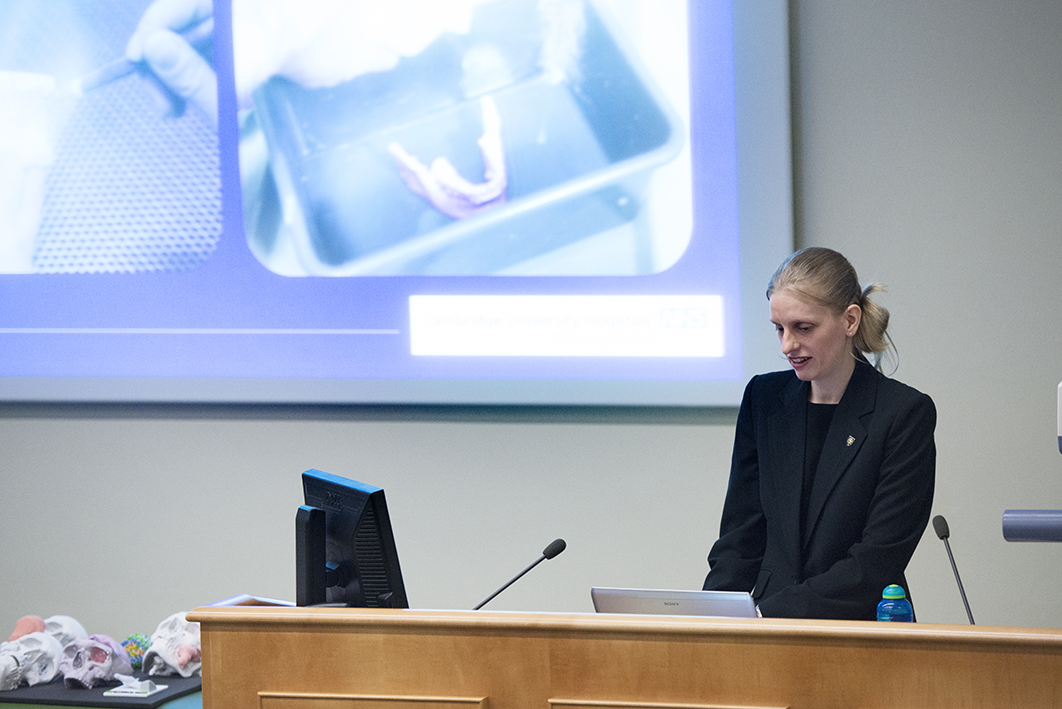
Dr Karen Eley
Stephen Introduced Dr Karen Eley, who described her work in analysing and segmenting MRI files for 3d printing, which had been the subject of her PhD Thesis. Dr Eley had also worked closely with maxillofaxial surgeons to make 3d surgical planning models prior to taking up her current post at CUH, and this led to her working with Mr Cameron, who was using such models for his maxillofacial surgery, for patients who had serious facial injuries resulting from Trauma or disease. But the 3d prints had to be made elsewhere in the country, which was not a practical arrangement upon which to develop a routine service. The solution would be to have a 3d printing service based within Adenbrooke's Hospital and, because this would entail substantial resources, the service should be centralised in order to make it available for other surgical specialities – or any other use in medicine or biomedical research.
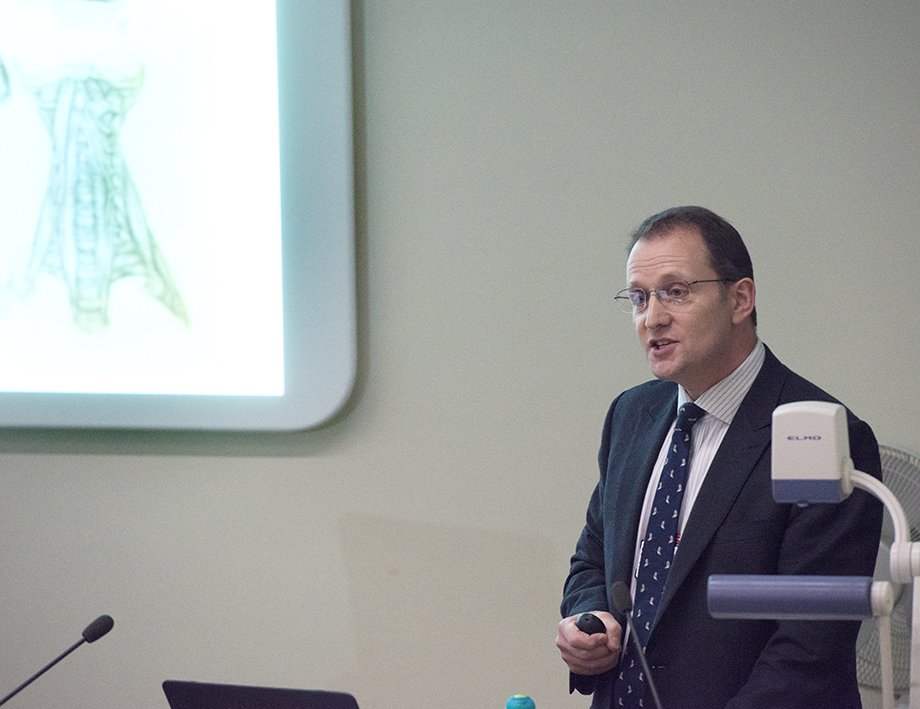
Mr Malcolm Cameron
Consultant Maxillofacial Surgeon, Mr Malcolm Cameron, spoke next and described the anatomy of the face and skull and the importance of radiological investigations in the development of reconstructive surgical techniques. The introduction of CT scans had added an enormous amount of detail to the information available from plain X -ray films, but digital CT scans and the ability to visualise anatomy in three dimensions completely revolutionised the way in which the surgeon could plan a procedure in great detail prior to surgery. Now, 3d printing from segmented CT scans has taken the process another step forward by enabling the surgeon and his team of maxillofacial technicians to make moulds from the replica bone surface and to bend metal plates precicesly to shape. This enables a higher degree of certainty in planning the surgery, greater precision in the shaping of implants and reduced time in theatre, which can lead to both cost savings and improved patient safety.
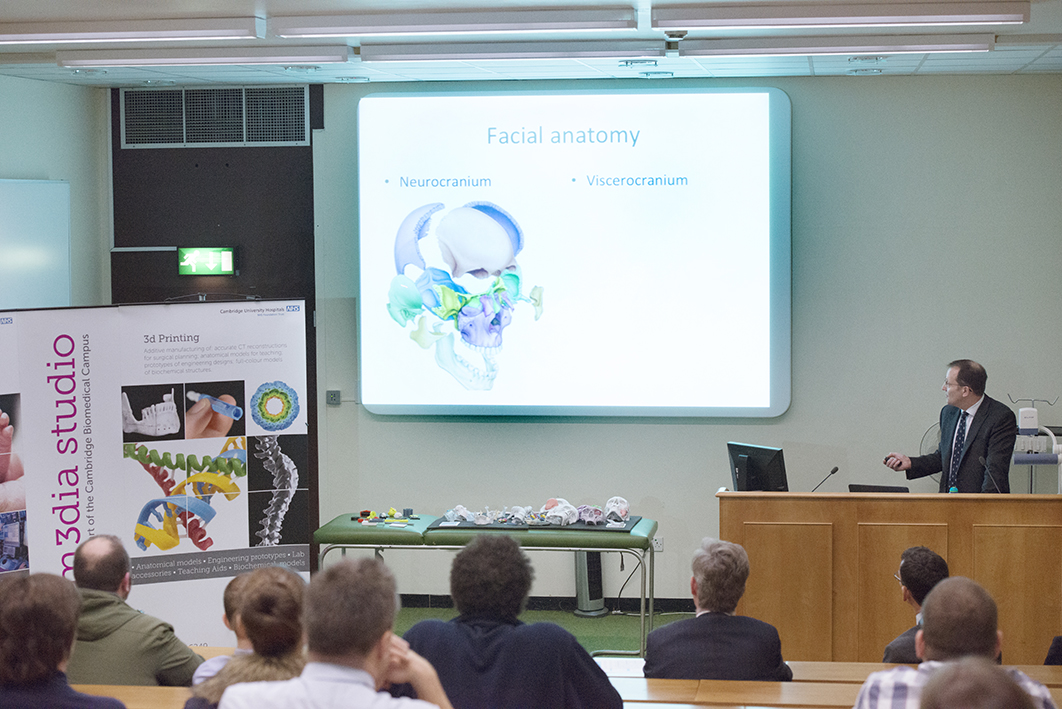
Mr Malcolm Cameron
Head of Media Studio, Jerry Nayler, then described the development of Media Studio's 3d printing laboratory in a refurbished store room adjacent to Media Studio at CUH. He showed the two 3d technologies that were installed in the lab. These were fused deposition modelling (FDM) for low-cost plastic models and binder-jetting to make full-colour models at precisely the same size as the original, or scaled up or down. The service had been set up with online forms for uploading print-ready files or requesting segmentation of DICOM files from CUH's PACS system or elsewhere in the Eastern Region. A full-time 3d Print Technician, Geoff Oliver, had been employed to operate the equipment and he had undertaklen software and hardware training, as well as a certificated medical terminology course, to be able to interpret and deliver the needs of surgeons, clinicians and academics on and aroud the Campus.
Jerry showed not only the work being done with Mr Cameron's team, but also examples of 3d models in orthopaedic surgery, CT-scanned specimens from the University's Sedgewick Museum, full-colour models of biochemical structures, cryo-electron microscopy models and clinical engineering prototypes.
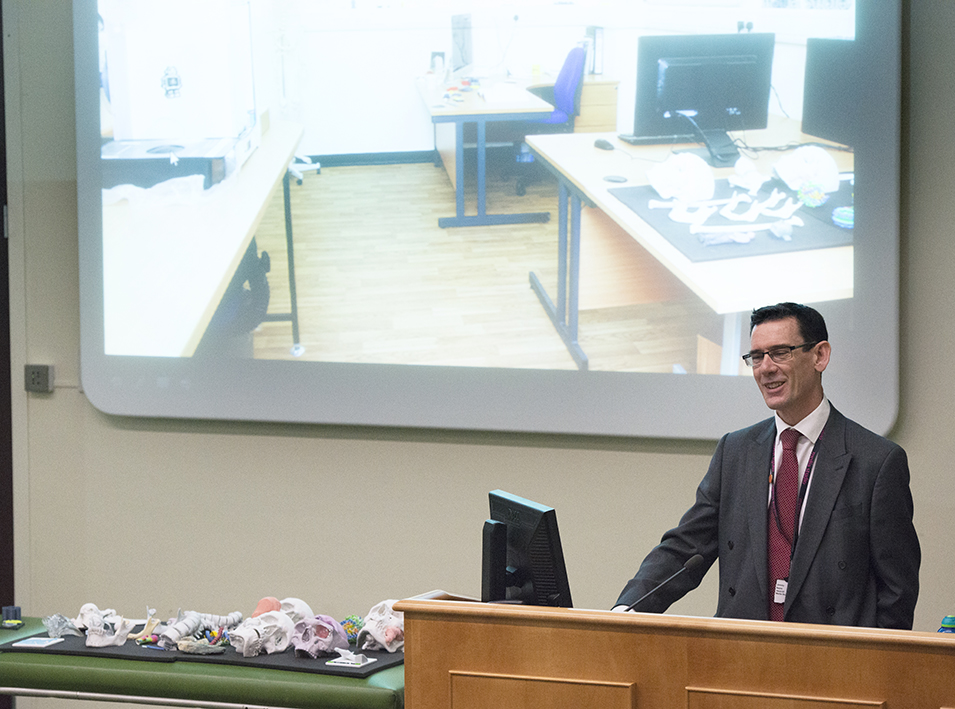
Jerry invited questions from the audience and a lively discussion ensued. People were able to look at, and handle, some examples of 3d printing from the lab and Geoff Oliver took a group across to the hospital to visit the lab. Others, who could not attend the presentations, had been visiting the lab throughout the day.
Jerry finished by reiterating his thanks to ACT, the Alborada Trust and the many people who had helped to bring the project to the current stage.
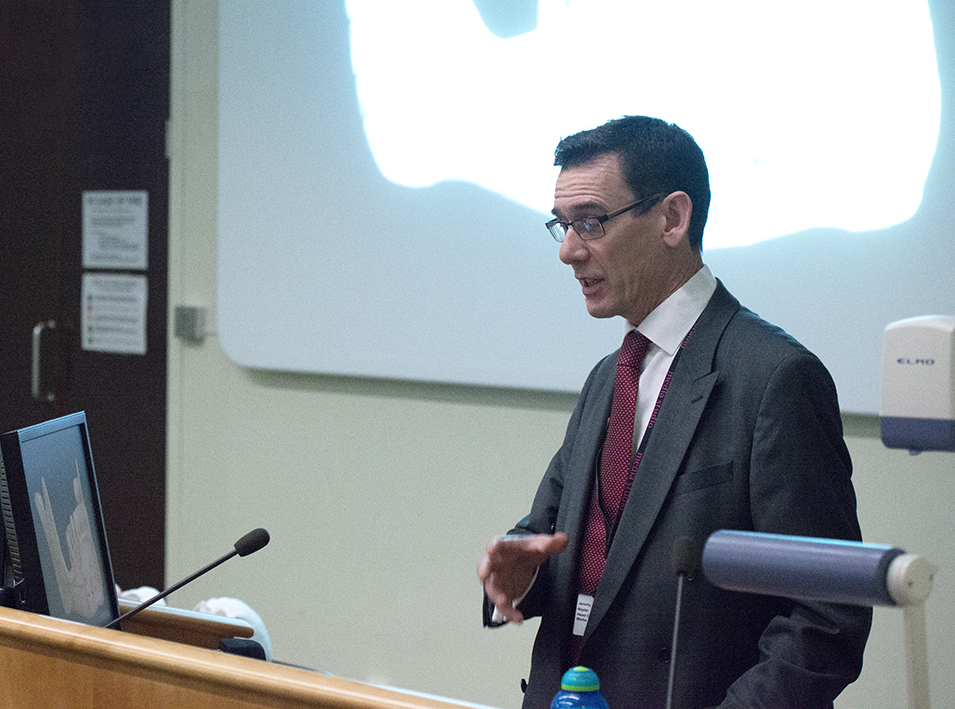
Jerry Nayler
Many people helped to bring the 3d Lab to fruition and deserve our thanks, including:
- ‘ACT’ – Addenbrooke’s Charitable Trust
- The Alborada Trust
- Karen Eley – Research Radiologist
- Malcolm Cameron – Consultant Maxillofacial Surgeon
- Benjamin Hilliam – Procurement
- Nigel Howlett & the Estates Team
- Simon Page & the IT Services Team
- Evgeny Dmitriev – Finance
- James Hallinan – Commercial Director
- Martin Graves – Clinical Scientist, MRIS
- Tom Stone, Danny Marsden & the Clinical Engineering Team
- The Media Studio Team
